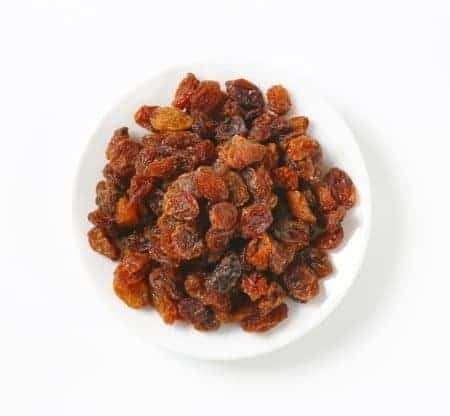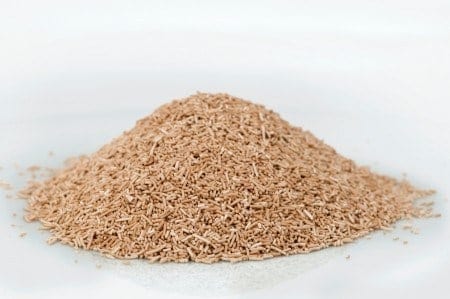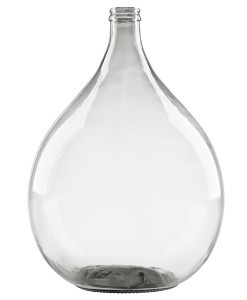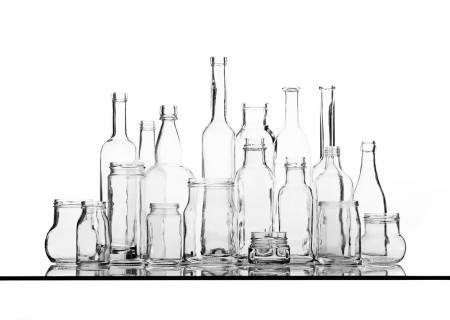Homemade Pomegranate Wine Recipe
Our pomegranate wine recipe is uncomplicated and tastes great! Read on for detailed instructions and a basic equipment list.

Although pomegranate wine may sound pretty exotic, it’s actually very easy to make at home.
Homemade pomegranate wine, with the addition of sugar and raisins, makes for a sweet, refreshing, fruity alternative to traditional shop-bought wines.
To make pomegranate wine at home, you’ll need some basic winemaking equipment, a bit of patience, and of course, a good recipe!
Ingredients
For 1 gallon of homemade pomegranate wine:
- 6 large pomegranates
- 1 lb raisins
- 2 lbs granulated sugar
- 1 packet wine yeast
- 1 tsp yeast nutrient
- 1 tsp pectic enzyme
- 2 tsp acid blend
- 1 Campden tablet
- 1 gallon of water
Equipment
To follow along with this pomegranate recipe, you’ll need some basic winemaking equipment – all of which is easily purchased online.
- 1 large glass jar (2 gallon) for primary fermentation.
- 2 glass demijohns with a fitted airlock and bung (1 gallon) for secondary fermentation. Having two of these at hand will make racking (transferring the liquid) much easier. You can make do with one demijohn, though that complicates the racking process a bit.
- Blender or food processor – the pomegranate seeds will need to be crushed, and access to one of these kitchen appliances will make the process much easier – however, these are not strictly necessary.
- Siphon tube for transferring the liquid into the demijohn after primary fermentation and racking.
- Strainer or sieve for straining the must
- Glass bottles for storing your pomegranate wine.
How to Make Pomegranate Wine
You've got the equipment, now you just need to put in the work! These are the 5 key stages for fruit wine preparation.
1. Preparing the fruit
Start by de-seeding the pomegranates. This recipe calls for 6 large ones – if you can only get small pomegranates, use 9 or 10.
The fruit should be ripe – you can tell that a pomegranate is ready to eat if it feels heavy in your hand and its skin is firm and taut.

Extracting the seeds from a pomegranate can be tricky if you’re not used to it. If you’re not sure how to go about it, there are plenty of video tutorials online that can help you.
Discard everything but the red seeds, and place these into a large bowl. They will need to be crushed, and the best way to do this is by pulsing them in a blender or a food processor. However you choose to crush the seeds, make sure you keep all of the juice.
Pour the crushed seeds with the juice into a large glass jar (ideally a 2-gallon one).
Recommended: Is this the tastiest mulberry wine recipe that you’ll ever try? We certainly think so!
2. Mixing the ingredients
Pour 1 gallon of water into the jar. Ideally, the water should have been boiled and cooled, to ensure it’s completely sterile.
As we’ll be adding a Campden tablet, however, this is not strictly necessary – filtered water should be fine.
Add the sugar, acid blend, pectic enzyme, and yeast nutrient into the must – which is what we call the mixture before it ferments into wine.
Although pomegranate seeds taste quite sweet, their sugar content is not quite high enough to produce wine with a rich body. Also, their acid content is quite high. To improve the body and quality of your finished pomegranate wine, add organic raisins to the must.

The raisins should be minced beforehand, to enable the ingredients to combine more thoroughly. Raisins will provide extra nourishment for the yeast, making up for what pomegranate seeds are naturally lacking.
Lastly, add one crushed Campden tablet to the must, and leave to stand for around 12 hours. The Campden tablet will get rid of any wild yeasts and bacteria, ensuring your must won’t spoil and that the fermentation process will be ‘clean’ and predictable.
3. Primary fermentation
Now that the Campden tablet has done its job, it’s time to add the wine yeast and start primary fermentation.

Cover the jar, but ensure that it’s not completely airtight. If you don’t have a suitable lid for the vessel, you can use a piece of cloth held in place with a rubber band.
Leave the jar in a warm place for five days, stirring the contents at least twice per day. Once the five days are up, you’ll notice that the must is far less active – i.e. there will be fewer air bubbles forming in the fruit pulp. That’s when you’re ready to move on to the next step: secondary fermentation.
4. Secondary fermentation
The time has come to move your homemade pomegranate wine into its second fermentation vessel – ideally, a 1-gallon glass demijohn.
To this end, start by pouring the must through a strainer or sieve. If you don’t have either of those, you can use a funnel covered with a clean cheesecloth. The aim is to keep only the liquid, discarding the fragments of the fruit.

Pour the liquid into the demijohn and fit the airlock, then set aside for one month. After this time, you’ll need to siphon the wine into a second glass demijohn – a process called racking. This way, you’ll leave the yeast sediment behind, helping the wine to clear.
If you don’t have a second demijohn, you can place the wine into a temporary container (such as a jar) while you clean out the original demijohn, and then pour the liquid back in.
At every stage of the process, remember to sterilize all of your containers and tools. If any bacteria enter the liquid – for example, from an improperly cleaned strainer – your wine could be ruined.
Boiling water is usually enough to sterilize the surfaces, though you could also use a weak bleach solution – in which case, make sure to rinse with plenty of water.
Rack your wine two more times, with 3-month intervals. To recap, after you put the wine into the demijohn and start secondary fermentation, you should rack it at one month, four months, seven months and, if needed, ten months.
Recommended: Make yourself a muscadine wine at home by following this step-by-step recipe.
5. Bottling
Homemade pomegranate wine will usually be ready to bottle after approximately one year of secondary fermentation. If you’ve racked it several times during these 12 months, it should be stable and clear by this point.
This means that it’s ready for bottling! Glass bottles are the best choice, and you’ll need 5 standard wine bottles to accommodate your one gallon of pomegranate wine. Be sure to sterilize these beforehand.

Pour the pomegranate wine into the bottles and cap or cork them. Unfortunately, the wine is not quite ready to drink just yet – it will need to rest in bottles for at least six months to a year.
And here we are – this is how to make pomegranate wine. If you enjoyed this post, check out our other fruit wine recipes and let us know your favorite!
